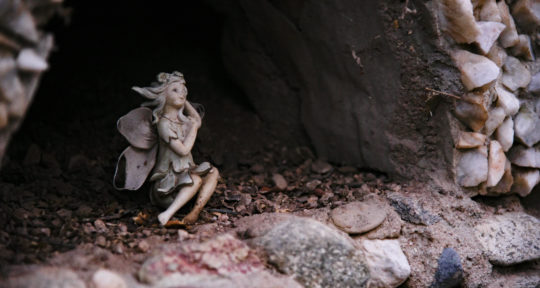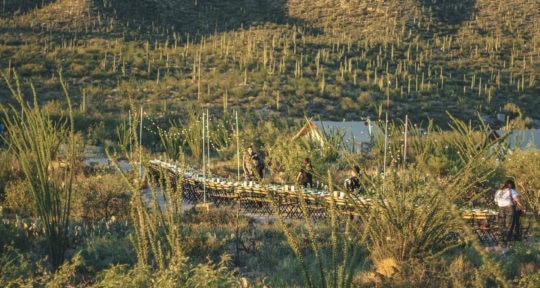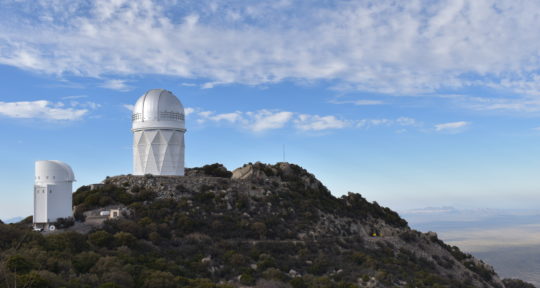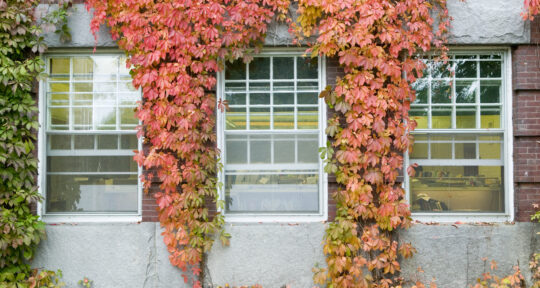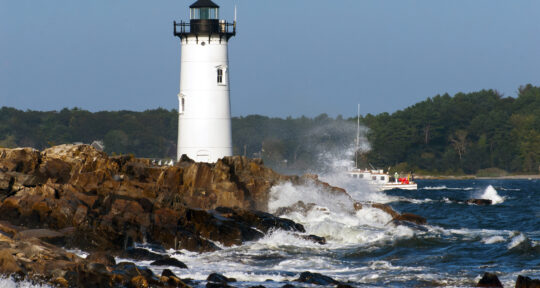“Just stand for a moment and listen,” says Andy Fisher, Chief of Interpretation at Saguaro National Park. “A light breeze is perfect.”
It starts as a barely audible hum, but Fisher is right—the wind makes beautiful music as it whispers through the spines of a saguaro cactus.
“It’s one of my favorite moments in the park,” she says. “Another is the view from Signal Hill. You have a 360-degree view of the desert, and right next to you is exceptional rock art.”
Here in Tucson, Arizona—in the heart of the Arizona-Sonoran Desert—one can experience something like nowhere else on Earth.
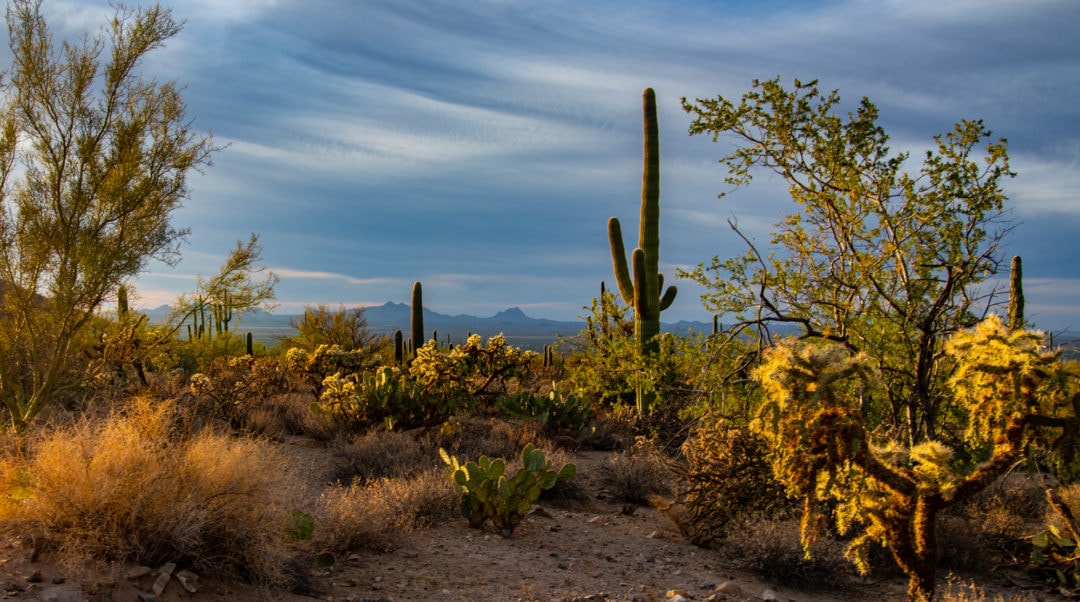
The reason for being
“Our reason for being is to preserve the saguaro cactus,” explains Melanie Florez, supervising park ranger. “The Rincon Mountain District was formed in 1933, and the Tucson Mountain District was added in the early 1960s. These are some of the densest stands of saguaro forest anywhere.”
Saguaro National Park’s eponymous cactus attracts thousands of visitors every year. The instantly recognizable, tall, and slender cactus is a symbol of the American West. It grows in Arizona in the narrow band of elevation where Tucson nestles and the hills rise around Phoenix. More than 90 years ago, a group led by the University of Arizona president set out to preserve this dense collection, creating the Rincon Mountain District of Saguaro National Park.
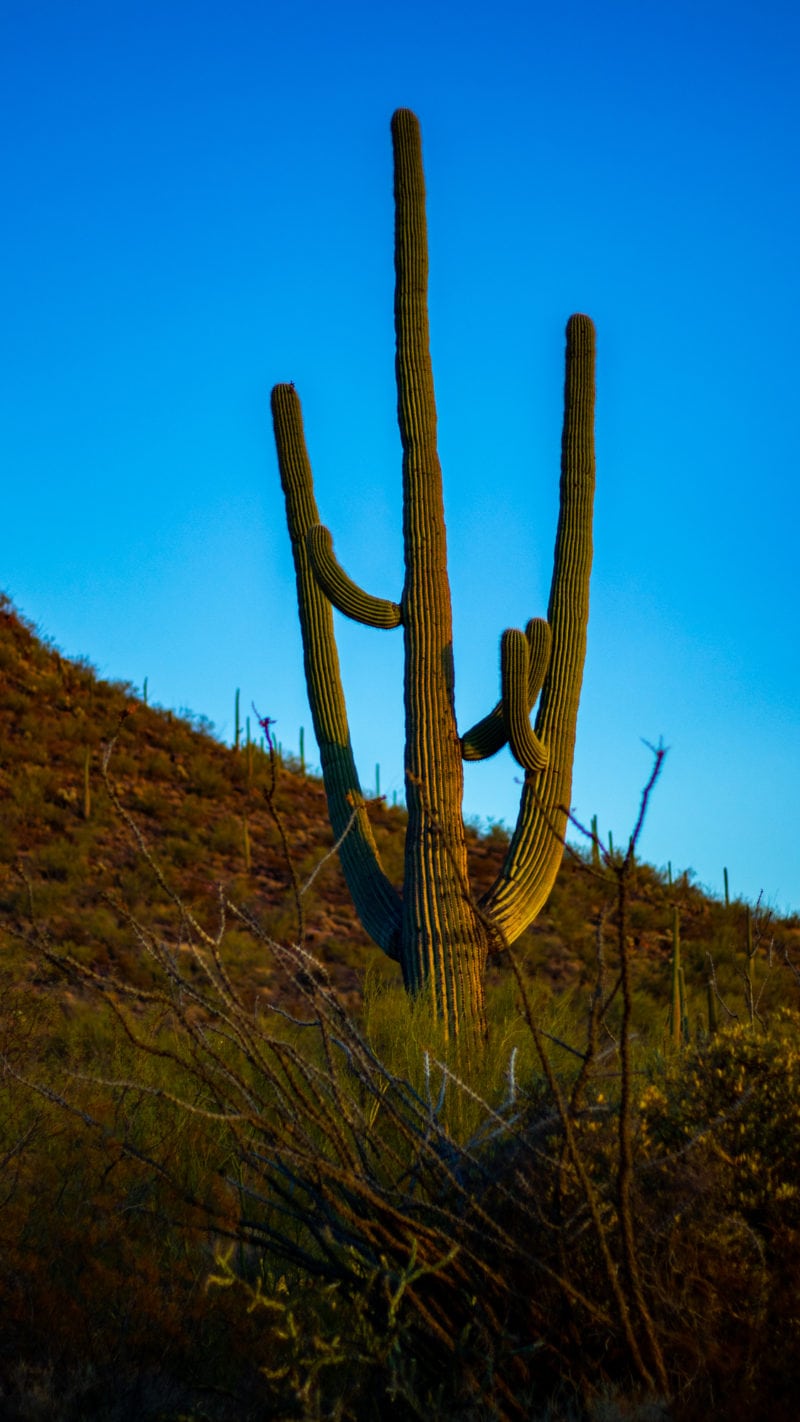
The slow-growing saguaro cacti rise an inch or two each year before reaching a mature height of 40 to 50 feet. Saguaros live for generations, some with lifespans of up to 200 years. Their basic shape and sheer number of arms are fascinating to witness. The park also features an extremely rare cristate (or “crested”) saguaro, with a swirling tip that grows in various shapes and patterns. There are an estimated 2 million saguaros inside Saguaro National Park, but only 10 of them are classified as cristates.
Right to the city’s doorstep
Saguaro National Park seems to seep into Tucson’s edges and delivers the Arizona-Sonora Desert right to the city’s doorstep. Split into two districts separated by 18 miles—with Rincon Mountain to the east and Tucson Mountain to the west—the park’s urban location means there is no need to provide camping or other overnight accommodations in the park.
“There are so many nearby lodging opportunities, we can dedicate park resources to the unique experience of the desert,” says Fisher. “For car camping or RVs, there are plenty of campgrounds and hotel rooms all over the city of Tucson and in nearby Pima County and Arizona state parks.”
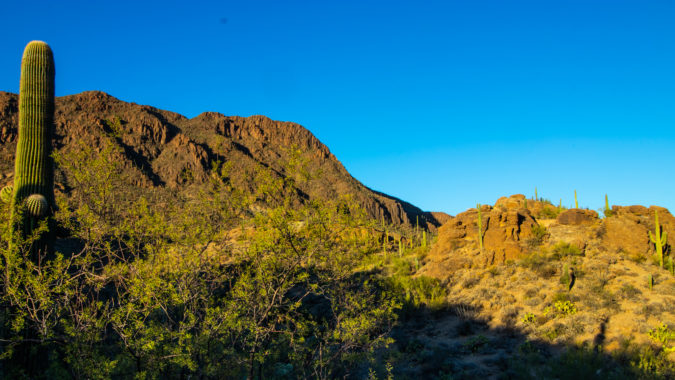
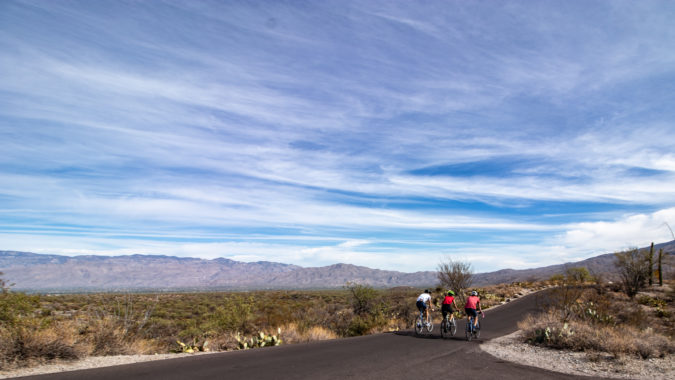
However, backpackers with overnight permits can camp at several hike-in campgrounds in the Rincon Mountains District. Fisher also adds that, due to its layout and close proximity to the city, Saguaro is one of the national parks that’s actually really exceptional to see by car.
“There are many hiking trails for all skill levels, but [visitors] can truly experience the beauty of the desert from their cars,” she says.
Tucson Mountain District
Saguaro National Park West captures the true essence of the desert highgrounds with its cartoon-like mountain peaks. The Tucson Mountains, along with the distant Roskruge and Waterman Mountains, draw nightly crowds for one of nature’s best drive-in shows: Arizona’s breathtaking sunsets.
To access the Tucson Mountain District, you must pass through the Red Hills Visitor Center, about 10 miles west of the city. The Cactus Garden Trail is an easy, paved walk that introduces visitors to the diversity of plant species and cacti found in the Sonoran Desert. Easily accessible and stroller-friendly, the trail loops around the west side of the visitor center.
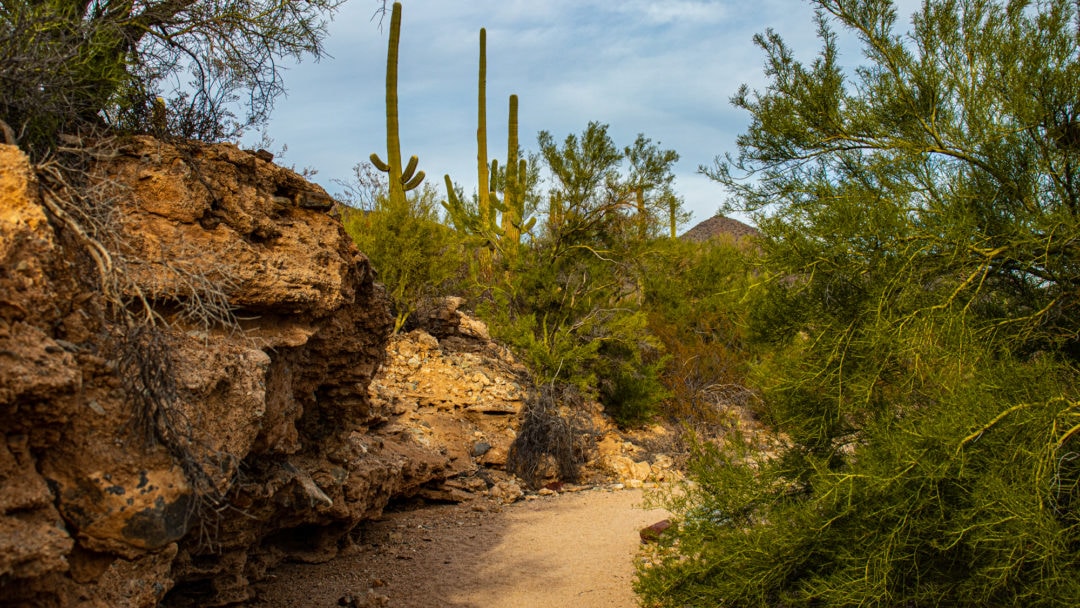
A 600-foot loop on the visitor center’s north side makes for another easy hike, one that begins with steps down into the Javelina Wash. This trail is perfect for learning about the power of water in the desert—how it carves arroyos and canyons and leaves a liquid legacy breathing life into dense stands of greenery. The newly arrived visitor usually marvels at how green this part of the desert is.
A little further to the north is the Bajada Loop, a well-maintained dirt and gravel road cutting through the saguaro forest and surrounding hills. The beautifully sited picnic areas make a perfect setting for a meal on the 45-minute ride. And if you’ve come this far, don’t miss the Signal Hill picnic area.
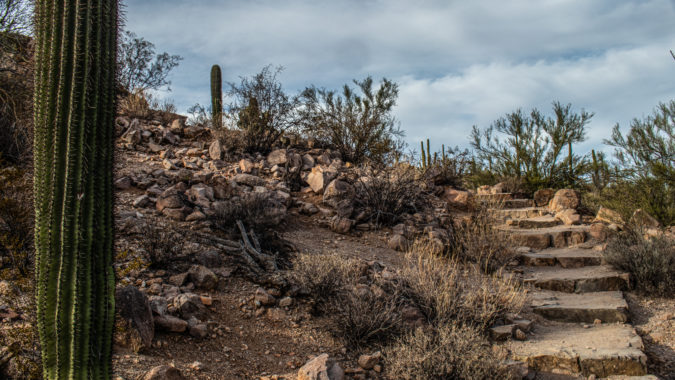
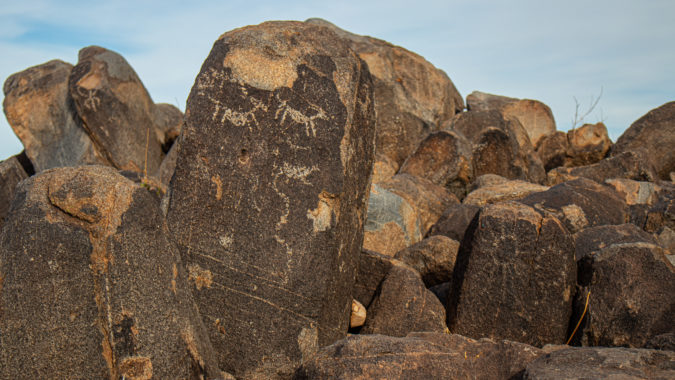
“Signal Hill is an easy climb because of the steps,” says Fisher. “It’s worth the 20 minutes to walk to the top and see the rock art. You realize that not only is it beautiful, but it’s also a view that was important to people here hundreds and hundreds of years ago. This place has real meaning. You can stand there and create your own meaning, too.”
Rincon Mountain District
The primary attraction in Saguaro National Park East is the Cactus Forest Loop Drive. This one-way, 2-hour drive meanders through the dense forest and offers countless places to pull over for photos, short walks, and long hikes.
“Bring plenty of water,” says Fisher. “A liter an hour when hiking is the right amount.”
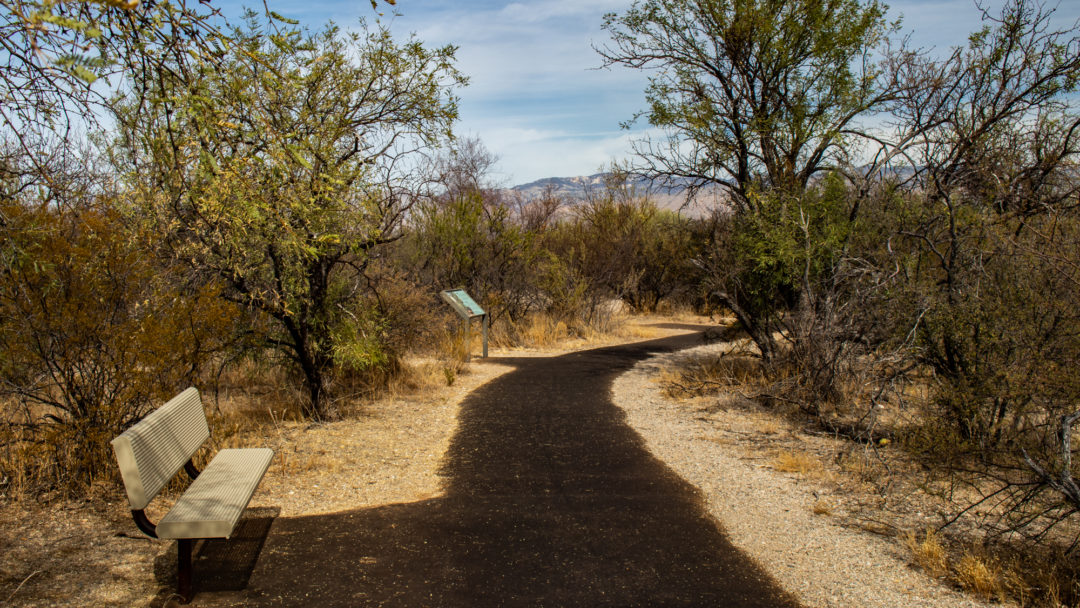
Continuing on, a dirt and gravel road takes riders from the Cactus Forest Loop Drive to the Mica View picnic area. From here you can access the Desert Ecology Trail—an accessible, paved loop that meanders through a mesquite bosque and riparian habitat. This particular trail is also known for its close encounters with desert denizens such as rabbits, lizards, and the occasional roadrunner.
“There is something to see at every trailhead or overlook,” says Fisher. “There’s more birdwatching in the East, though. You’ll be hiking and the cactus wren will be sitting above you laughing the whole time.”
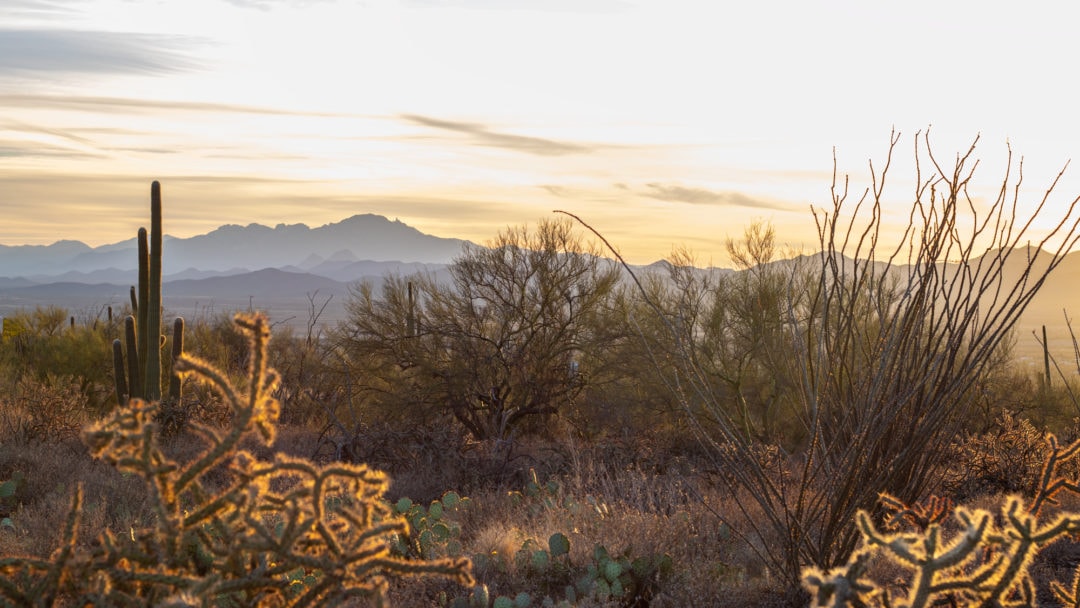
Time doesn’t matter
After exploring both sides of the park, I still feel as if my weekend trip only scratched the surface—with so much to explore and so much ground to cover, I ask Florez on my way out how much time is required to really experience the full extent of Saguaro National Park?
“How much time do you have?” she says. “We can show you something for almost any length of visit. This is a park that is all about your experience.”
If you go
The Tucson Mountain District is open to vehicles from sunrise to sunset daily. The Rincon Mountain District is open to vehicles from 5 a.m. to 8 p.m. in the summer, and 5 a.m. to 6 p.m. in the winter. You can walk or bike into the park 24 hours a day. Entrance to either side of the park costs $25 per vehicle, or $15 for anyone entering on a bike or by foot.

